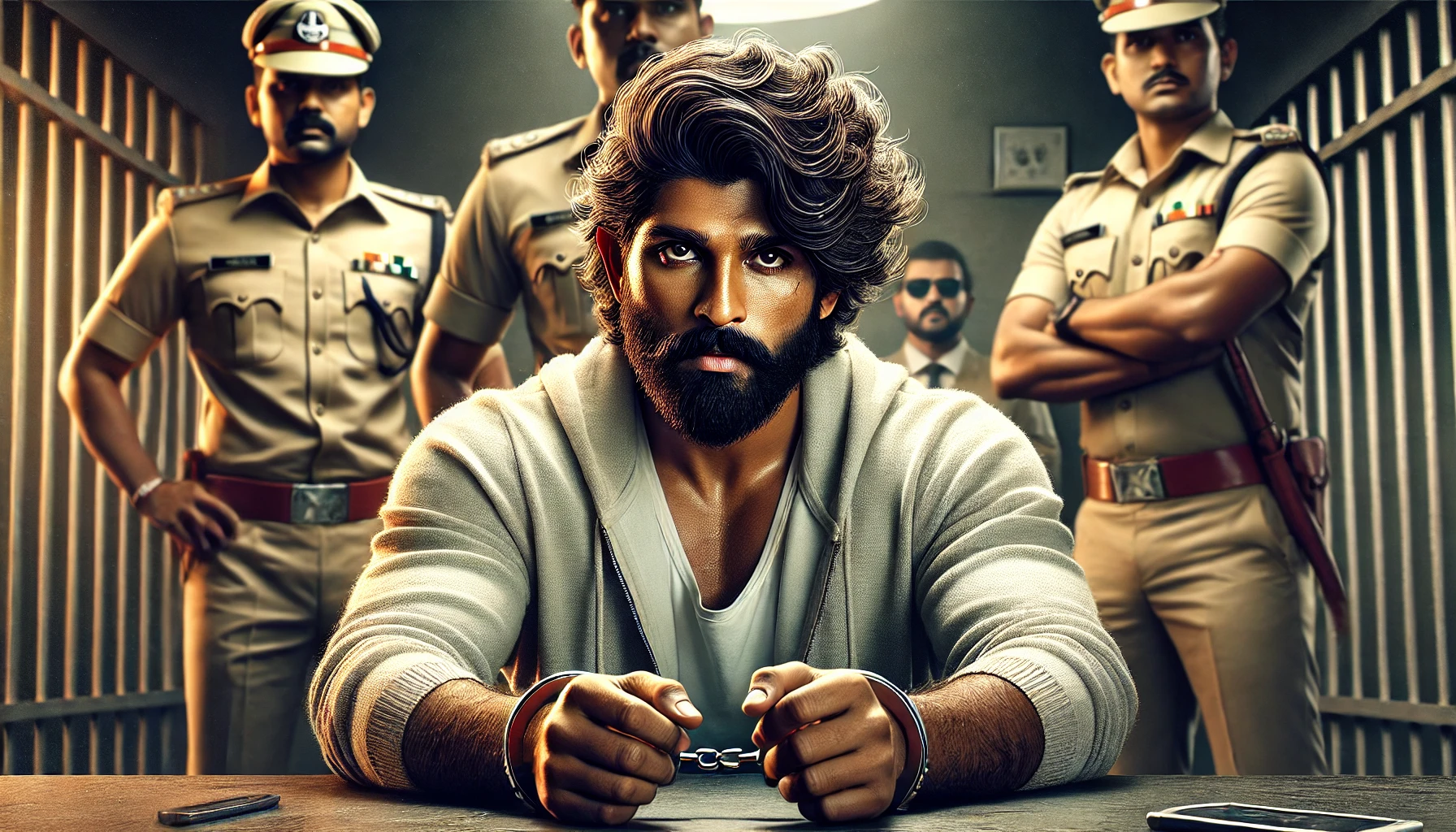
Pushpa 2 Screening Tragedy Allu Arjun’s Arrest Sparks Nationwide Debate on Celebrity Accountability and Event Safety
The world of cinema was shaken when a joyous premiere for the much-anticipated movie Pushpa 2: The Rule turned into a devastating tragedy on December 4, 2024. The Sania Theater in Hyderabad, packed with fans eager to celebrate the blockbuster, became the scene of a horrific incident resulting in the death of a woman and severe injuries to her 9-year-old son. Now, the arrest of superstar Allu Arjun and his bodyguard, Santosh, has turned the spotlight onto questions of celebrity accountability, event management, and public safety.
This blog post explores the details of this tragic event based on reports from India Today, Abdul Bashir, and other trusted sources, while analyzing the broader implications for public gatherings and high-profile celebrity events.
Timeline of Events: What Happened on December 4?
The Screening and Overcrowding
The chaos unfolded during the 9:30 PM premiere screening of Pushpa 2 at Sania Theater in Hyderabad. According to India Today, the venue was filled well beyond its capacity as fans flocked to catch a glimpse of Allu Arjun. The situation escalated when news broke that the actor, along with the film's director, Sukumar, would make a surprise appearance.
Despite the excitement, the lack of adequate security and crowd control turned the event deadly. Initial reports described the incident as a stampede, but further investigations revealed that the woman died due to suffocation caused by severe overcrowding. Her 9-year-old son was critically injured in the melee.
The Arrest of Allu Arjun and Santosh
Charges and Legal Context
On December 13, Allu Arjun was arrested by Telangana police from his Hyderabad residence. As per India Today, the charges include culpable homicide not amounting to murder under Section 304 of the Indian Penal Code (IPC), a non-bailable offense. His bodyguard, Santosh, was also arrested for allegedly pushing aside fans, exacerbating the chaos.
The police have accused Allu Arjun, his team, and the theater management of negligence, citing their failure to inform authorities about the actor’s appearance in advance.
Legal Proceedings
Following his arrest, Allu Arjun was taken to the Chikkadpally police station, where his statement was recorded. He is expected to undergo a medical examination at Osmania or Gandhi Hospital, a standard protocol before being presented in court.
Meanwhile, Allu Arjun’s legal team had earlier approached the Telangana High Court, seeking to quash the FIR filed against him. However, no relief has been granted yet. According to reporter Abdul Bashir, the court is set to hear a motion on the case later today.
Eyewitness Accounts and Police Investigations
The Eyewitness Perspective
Eyewitnesses described chaotic scenes at the theater, with fans pushing and shoving to get closer to Allu Arjun. Many blamed the absence of proper security for the tragic outcome. One attendee told India Today, “The theater was overcrowded, and there was no visible effort to manage the crowd. When the actor arrived, people surged forward, and everything spiraled out of control.”
The Police’s Stand
Police officials have maintained that they were not informed about Allu Arjun’s planned appearance at the event. A senior officer from Chikkadpally police station stated, “Had we been informed, we would have deployed additional personnel to manage the crowd. This lack of communication was a critical oversight.”

Public Reaction: A Nation Divided
Social Media Outrage
The tragedy has sparked widespread public outcry. Hashtags like #Pushpa2Tragedy, #JusticeForVictims, and #AccountabilityInEvents have been trending across platforms like Twitter and Instagram. Fans and critics alike are calling for stricter regulations on celebrity events and better coordination between event organizers and local authorities.
Divided Opinions
While many have criticized Allu Arjun and his team for negligence, others have argued that the theater management and police should bear equal responsibility. Prominent voices from the entertainment industry have remained largely silent, awaiting further developments in the case.
Broader Implications: Lessons for Public Event Safety
This tragic incident underscores systemic flaws in managing high-profile events, particularly in India, where fan enthusiasm often leads to massive gatherings.
Key Issues Highlighted
- Overcrowding: Venues must adhere strictly to capacity limits to prevent hazardous situations.
- Lack of Coordination: Effective communication between event organizers, celebrities, and local authorities is crucial.
- Inadequate Emergency Preparedness: Organizers must have contingency plans and trained personnel to handle unexpected situations.
Recommendations for Change
- Improved Regulations: Governments should mandate stricter safety guidelines for public events involving celebrities.
- Accountability Mechanisms: Stakeholders, including organizers, celebrities, and venues, should be held accountable for lapses in safety protocols.
- Public Awareness Campaigns: Fans should be educated about the importance of following safety guidelines at events.
Conclusion: A Call for Change
The arrest of Allu Arjun has turned a spotlight on the urgent need for systemic changes in the way high-profile events are organized in India. While the legal battle continues, this tragedy serves as a sobering reminder of the consequences of negligence and poor planning. The focus must now shift toward ensuring justice for the victim and her family while implementing measures to prevent such incidents in the future.
Disclaimer
This blog post is based on publicly available information from trusted news outlets, including India Today and reports by Abdul Bashir. It has been written for informational and analytical purposes and does not reproduce proprietary material from these sources. The author assumes no responsibility for inaccuracies in third-party reporting.